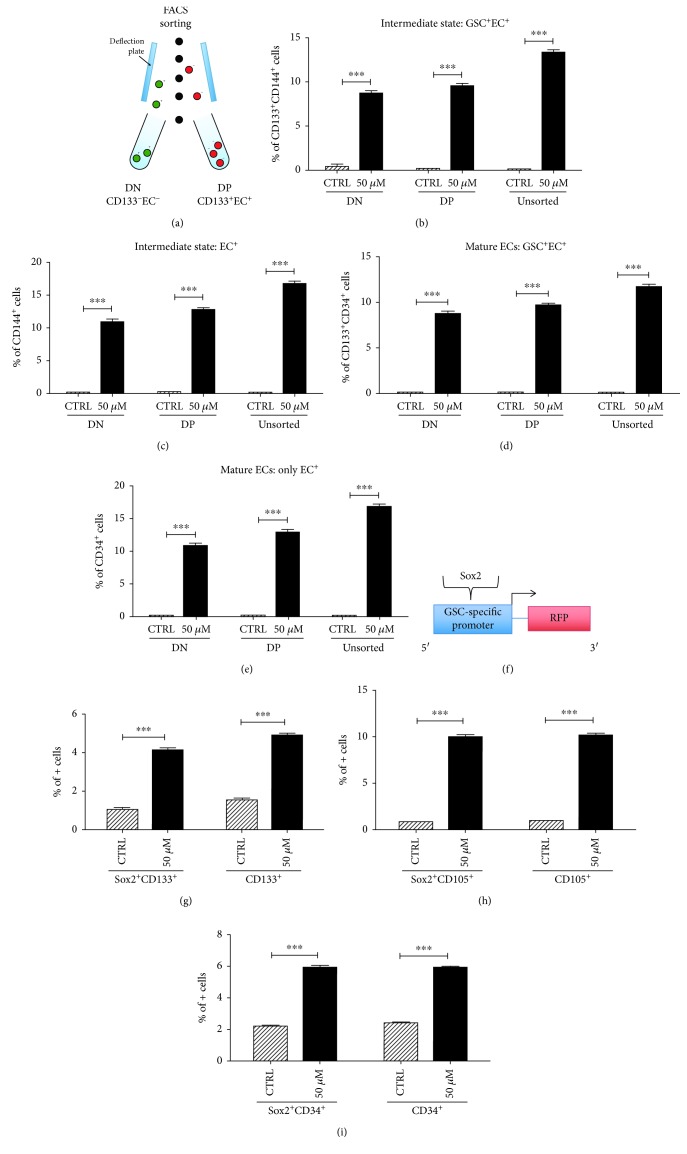Figure 2.
TMZ treatment induces expression of endothelial markers in both GSC+/EC+ and GSC−/EC− populations. The PDX line GBM43 was treated with 50 μM TMZ or equimolar DMSO after being divided into 3 populations—EC+/GSC+, EC−/GSC−, or unsorted (a). After 8 days, cells were analyzed by flow cytometry for the percentage of cells positive for (b) CD133/CD144, reflecting cells transitioning from a stem state to an immature EC state; (c) CD144, reflecting cells in an immature EC state; (d) CD133/CD34, reflecting cells transitioning from a stem state to a mature EC state; and (e) CD34, reflecting cells in a mature EC state. To confirm the results, a promoter-reporter system that is highly specific for Sox2 expression (another GSC marker) was also used (f). After treatment for 8 days, flow cytometry was used once more to determine the population of cells positive for (g) Sox2/CD133 and CD133, reflecting the GSC state; (h) Sox2/CD105 and CD105, reflecting the transition to immature ECs and the immature EC state, respectively; and (i) Sox2/CD34 and CD34, reflecting the transition to mature ECs and the mature EC state, respectively. Bars represent the means of three independent experiments, and error bars show the standard error measure. The effect of TMZ was compared in each population by the Student t-test with Tukey's post hoc test.

